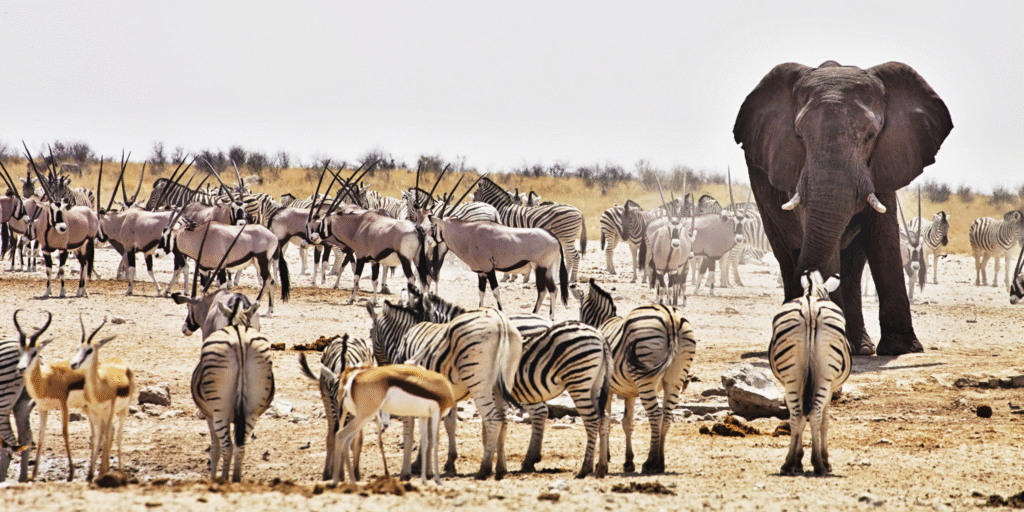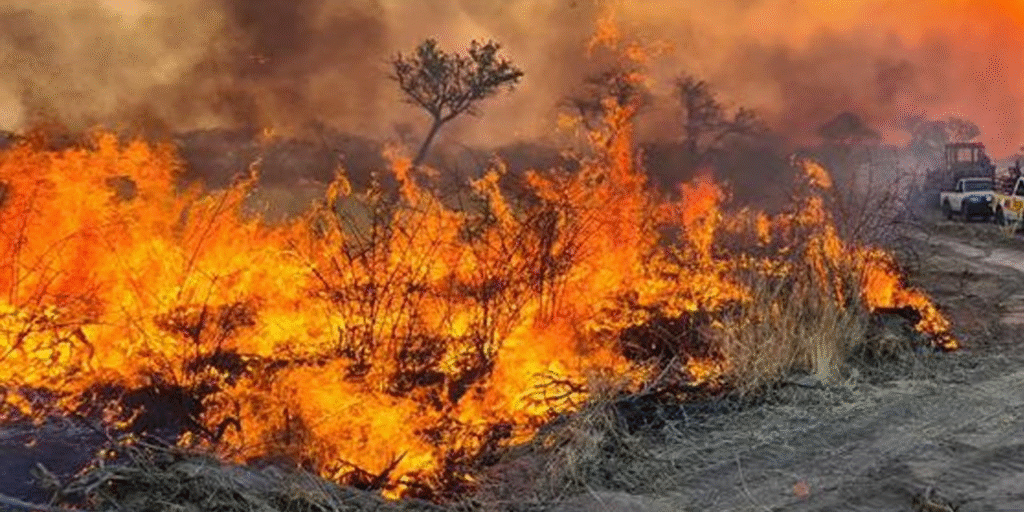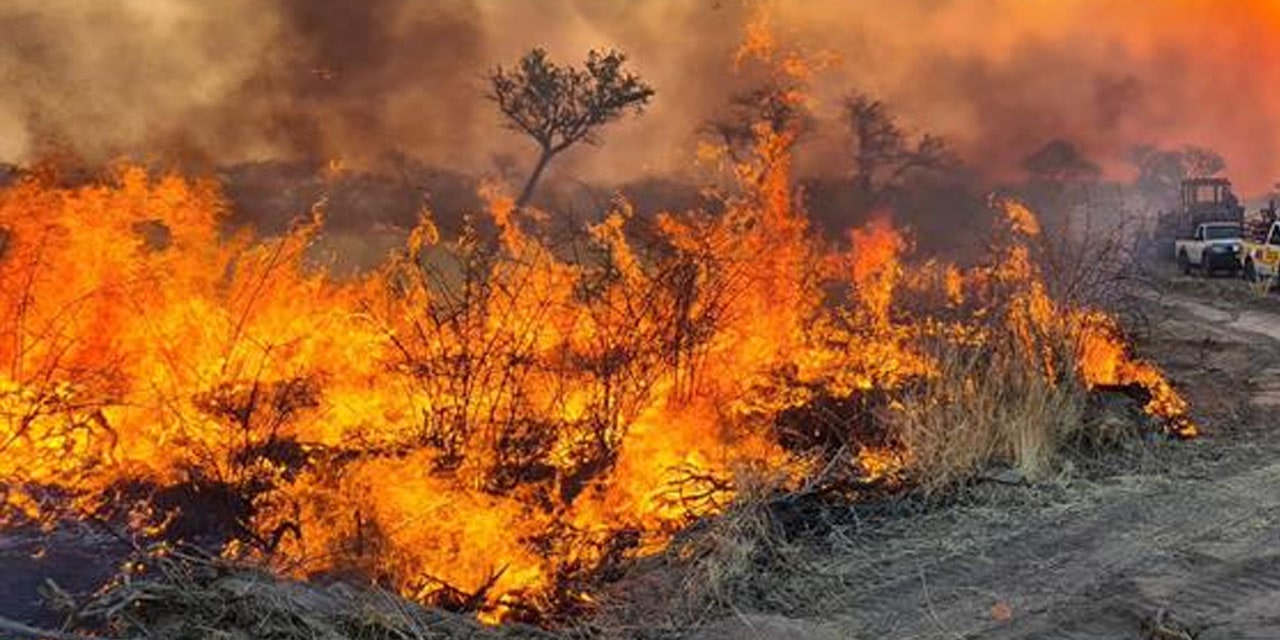At a Glance
- Wildfire scorched 34% of Etosha National Park, threatening rhinos, elephants and grazing lands.
- Safari tourism was hit by route closures, canceled trips and a slump in lodge bookings.
- Namibia ramps up recovery with habitat restoration and new fire management strategies.
Etosha National Park, one of Namibia’s most important natural areas and a popular stop on Southern Africa’s safari circuit, is still dealing with the damage from a wildfire that swept across the area in late September.
The blaze, which began on Sept. 22, scorched more than a third of the park’s vast wilderness and has left behind a trail of ecological and economic challenges.

Fire contained, but damage lingers
The blaze, fueled by dry bush and strong winds, originated near a charcoal production site just outside the park’s boundary.
By late September, more than 775,000 hectares—about 34 percent of Etosha’s area—had been consumed by fire.
Authorities confirmed the deaths of at least nine antelopes, with fears that more wildlife, including black rhinos and elephants, may have been affected.
After a week of round-the-clock firefighting, the flames were largely contained on Sept. 29.
The effort brought together firefighters, police, military personnel, volunteers, and aircraft dropping water and fire retardants.
While the main front has been stopped, smaller hotspots remain, requiring constant patrols to avoid flare-ups.

Impact on tourism
For travelers and operators, the fires have complicated an already demanding year.
The park remains open, but several major tourist routes—including the Halali junction to Rietfontein, Eland Drive detour, and Rhino Drive detour—are closed or unsafe.
Safari bookings have been canceled or rerouted, while some lodges and camps have reported a decline in reservations.
The crisis coincides with a large road rehabilitation project.
The first 20 kilometers from Okaukuejo to King Nehale Gate are under construction until November, temporarily shutting the direct road between Okaukuejo and Halali.
A marked detour through Gemsbokvlakte offers an alternative, though it adds up to an hour of travel.
While inconvenient, the detour has given some visitors fresh game-viewing opportunities in less frequented areas.
Park officials say that safety is the most important thing.
Visitors should observe the rules set by the Ministry of Environment, Forestry, and Tourism (MEFT), keep away from damaged areas, and be aware that winds can start fires again.
Ecological and conservation challenges
The ecological fallout is significant. Vast tracts of grazing land have been lost, threatening the delicate balance between predator and prey.
Animals displaced into new territories could increase human-wildlife conflicts along park edges.
For conservationists, the immediate priority is habitat restoration and protecting endangered species such as black rhinos.
Experts say the crisis could accelerate a shift in Namibia’s fire strategy.
Once focused on strict suppression, authorities are now leaning toward integrated management, including controlled burns and investing in firebreaks and early-warning systems.
The wildfire is also expected to intensify efforts to equip rangers and improve rapid-response capacity.

Tourism recovery and long-term renewal
Despite the damage, several areas remain unaffected and continue to draw visitors.
The open salt flats of the Etosha Pan act as natural firebreaks, leaving sections such as Okerfontein and Kalkheuwel largely untouched.
Goas Waterhole, known for reliable wildlife sightings, remains accessible.
Visitor centers at Okaukuejo, Halali, and Namutoni camps are functioning as hubs for safety updates and route guidance.
Governments including the U.S., U.K., and Canada have issued advisories urging caution for travel to Etosha, underscoring the need for comprehensive insurance and preparedness for limited medical access.
Tourism leaders say the recovery process will require patience and collective effort.
Beyond rebuilding infrastructure, they emphasize restoring confidence among travelers and ensuring that tourism supports conservation rather than undermines it.
“Etosha has always been a symbol of Namibia’s resilience,” a senior MEFT official said in a briefing.
“We are confident that with the right strategies, we can safeguard its biodiversity and ensure that it continues to welcome visitors for generations to come.”
Lessons for African travel
Etosha’s wildfire underscores the fragility of Africa’s leading safari destinations in the face of natural disasters.
For tour operators and investors, the event is a reminder to diversify products, prepare flexible itineraries, and strengthen communication with clients during crises.
It also highlights a larger trend: that sustainable tourism and ecological stewardship can no longer be treated separately.
As Africa seeks to grow its share of the global travel market, its flagship parks must remain both accessible to visitors and protected for future generations.
For Etosha, the road to renewal has only just begun.





